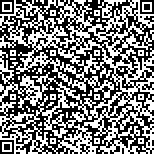下载中心
优秀审稿专家
优秀论文
相关链接
摘要

传统的后方交会最小二乘解法需要良好的外方位元素初值。在无初值或者初值不够精确的情况下,最小二乘迭代不容易收敛。在近景摄影测量或者计算机视觉等领域,往往不提供良好的初值,无法适用传统的后方交会解法。针对上述情况,本文提出了一种基于单应性矩阵的后方交会直接解法,在不需要初值的情况下,获取外方位元素的直接解。该方法根据单应性矩阵所描述的平面几何关系,利用单应性矩阵内在的约束条件,将后方交会问题转换为一个二元二次方程组的求解问题。该方法受舍入误差影响小,在无偶然误差的情况下,解算精度能达到10-9量级,能够避免传统直接解法计算复杂的问题,为传统的平差迭代解法提供良好的初值。此外,在多个控制点共面的情况下,该方法能够直接获得外方位元素的精确解。实验结果表明:在各种不同倾角拍摄的情况下,该方法均能够获得稳定的外方位元素,为后续的后方交会最小二乘算法提供良好的初值。采用本文方法计算的初值参与平差,能够达到与人工给定初值平差一致的精度,且迭代收敛速度是人工给定初值平差的2倍以上。在控制点共面的情况下,该方法的反投影精度能够达到亚像素级,且精度优于大部分主流的直接解法。
Space resection is the method of acquiring the exterior orientation parameters of a camera based on three ground control points (GCPs) at least and the corresponding image points. The traditional least squares method of space resection needs good initial values of exterior orientation parameters. However, good initial values are difficult to obtain in the oblique photogrammetry condition. The objective of this study is to compute accurate exterior orientation parameters automatically to provide good initial values for the least squares method of space resection. Solving the space resection problem needs three GCPs and the corresponding image points at least. This study initially starts from three GCPs and then derives a direct solution model of space resection. The three GCPs must be coplanar and the corresponding image points must also be coplanar. Thus, the homography matrix can be used to describe the geometric relationship between a set of coplanar points and another set of coplanar points. This study transforms the collinearity equation into a homography matrix model and derives two constraints based on the orthogonality of the rotation matrix. When only three GCPs exist, the space resection problem can be transformed into a set of binary quadratic equations. The binary quadratic equations have four solutions at most. An additional GCP is necessary to decide the unique solution. When three ground control points exist, the unique solution can be directly computed based on a set of linear equations, which are derived from the homography matrix model. After computing the homography matrix solution, the exterior orientation parameters can be obtained using the relationship between the homography matrix and collinearity equation. Three experiments tested the effectiveness and reliability of the proposed method. The first experiment aimed to test the performance of the proposed method when only three GCPs exist. The experimental data comprise done oblique image of the Yangjiang area and four evenly distributed GCPs. Three of the GCPs were used to compute the exterior orientation parameters, and the remaining one was used to decide the unique solution. The proposed method was compared with the traditional range and imaging equation models. In the first experiment, the proposed method showed the best back substitution accuracy, which reached as high as 9.908010E-9 pixels. However, the back substitution accuracies of the range and imaging equation models were merely 5.891172E-6 pixels and 9.285811E-4 pixels, respectively. The second experiment aimed to show the influence of the proposed method on the least squares result of space resection in different camera angle conditions. Two different datasets were used in the second experiment. The first dataset was still the oblique image of the Yangjiang area. The initial values using the proposed method were compared with the values from the traditional method and the man-made methods. In the large camera angle condition, the least squares iteration based on the traditional method was unable to converge. The accuracy of the least squares results based on the proposed method was as good as that of the man-made initial values. Both methods had back projection accuracies of 0.03592 pixels. However, the convergence rate of the proposed method was good. The second dataset was an aerial image of the Toronto area. Given that the camera angle was small, the traditional method achieved good initial values. Accordingly, the proposed method was compared with the traditional method. In the small camera angle condition, the back projection accuracy of the proposed method was as good as that of the traditional method. The accuracy of both methods was 0.02525 pixels, but the convergence rate of the proposed method is better than the traditional one. The third experiment compared the proposed method with currently popular direct solution models of space resection in the case of multiple coplanar GCPs. Camera calibration data were used in the third experiment. The accuracy of the proposed method was better than that of the coordinate transformation and polynomial models, and was as good as the accuracy of the virtual GCP model.
This study proposes a new direct solution model of space resection based on the homography matrix. It transforms the space resection model into a set of binary quadratic equations and acquires the direct solution of exterior orientation parameters. When multiple coplanar GCPs exist, the proposed method is able to transform the collinearity equation into a set of linear equations. Experimental results show that the proposed method can provide good initial values for the least squares method of space resection, which can be applied in oblique photogrammetry, close-range photogrammetry, and so on. Future studies will focus on acquiring direct solutions in the case of non-coplanar GCP s to improve the universality of the proposed method.

